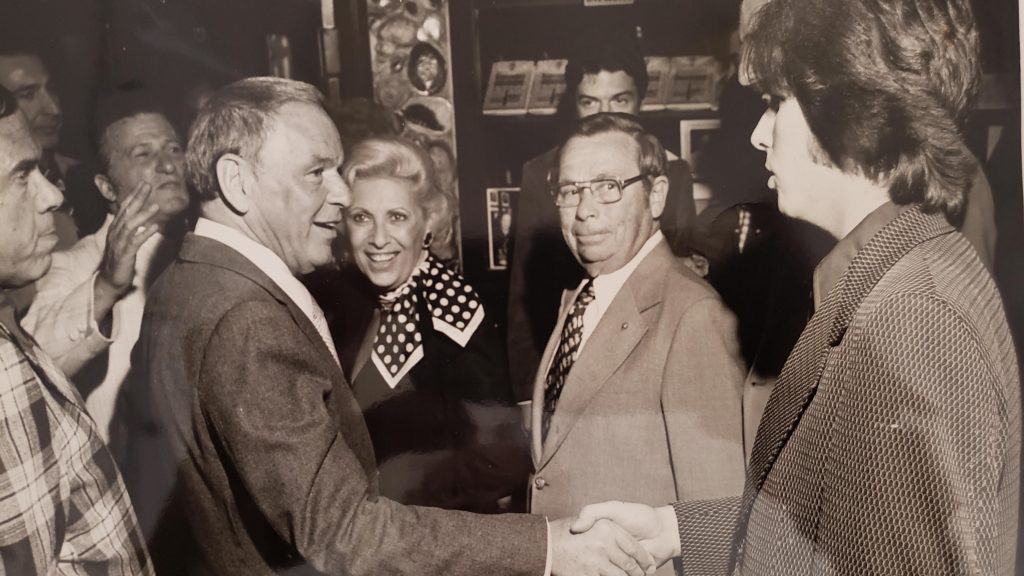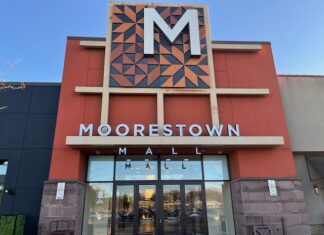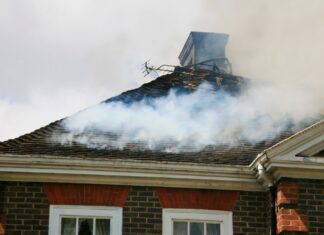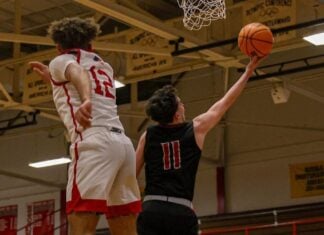

Apologies to Kinks songwriter Ray Davies, who once wrote, “Everybody’s a dreamer, and everybody’s a star. And everybody’s in showbiz, it doesn’t matter who you are.”
Not every star-struck son of a bricklayer gets a shot at the big time, no matter how big they daydream. Only a small fraction of hopefuls ever get to literally touch greatness.
Steve Lichtenberger was one of them. Among the stars of old-school Hollywood he could count as confidantes: Paul Lynde, Van Johnson and Dick Van Dyke.
Though firmly rooted in Cherry Hill for more than three decades, Lichtenberger grew up in the Kensington section of Philadelphia. He always saw better things ahead.
“It was rough then. You grew up there, maybe had a good shot to work the same job your father did,” he recalled during a June 28 conversation with the Sun.
“The only escape from the neighborhood was to hop on the El, go downtown and meet these people, and try to glean a bit of the good life.”
He found himself as a teenager visiting “The Mike Douglas Show,” at the time taped in Center City Philadelphia. He fell in love with the whole process of creating a television program, held in a basement, with 100 people in the audience, that achieved national popularity.
Lichtenberger caught the attention of Vince Calandra, a talent executive on the show, who said the eager teen had a quality nobody else had. He tabbed the young man to go around and solicit guests for the show.
“I started routinely going as a fan, and gradually worked my way into being around places in Philly where these people would be and then going to New York and hanging out, meeting with some celebs on an occasional basis, until it wasn’t so occasional,” he said.
Douglas taped his talk show in Philadelphia from 1965 to 1978, when production relocated to Los Angeles for its final three years.
“I went out to California, got a job in security at CBS,” Lichtenberger continued. “And on MIke’s first day, he saw me because he knew me and hired me for his show.
“I did work in and around Los Angeles based on the connections formed there. My niche was really in getting to people that other people couldn’t get to: Sinatra, Elvis, Jackie Onassis. And also not to just have a picture taken of them or with them, but sometimes do an interview or a video with them.”
Lichtenberger estimates he still has somewhere between 10,000 to 15,000 pictures and a wealth of videos based on his years traveling in famous circles.
“When I went to L.A., I thought that was gonna be it, I’d stay out there. I found that I couldn’t really do what I wanted to do: take it to the next level, if there was one,” he lamented.
“Times were changing. The big stars that were around the previous 30 to 40 years were slowly disappearing. Justin Bieber isn’t really of the same caliber as Jimmy Stewart.”
Confident he gave it his best shot, Lichtenberger returned to Kensington and then moved to New Jersey. He settled into a normal life with a regular job. Though he worked in places as far flung as New York and Virginia, he always landed in Cherry Hill.
“Paparazzi in Los Angeles are now out there chasing stars, and I can’t help but notice how disrespectful they are,” Lichtenberger said. “In the past, maybe 5 percent of celebs were unfriendly, but the rest once you got to them, they opened up.
“It’s switched now. They’ve gotten fed up with paparazzi being rude and intrusive. And if they don’t get close, they’ll twist it around and blame celebs for something to get money.”
To highlight the difference, Lichtenberger related a story of perseverance one night when he was 14, when he took a bus to New York to meet John Wayne — and pulled it off, forgetting all about the bus he had to take back home that same night. Frank Sinatra was another hard get; it took years of trust in periodic meetings before the barrier was broken in, of all places, Downey’s at Front and South streets in Philadelphia.
Asked why he thought the raft of stars he was sent to track down were able to connect with him in such a unique manner, Lichtenberger offered: “Because I was always there. There wasn’t a time when I wasn’t ‘there.’ Sure I was a ‘hanger-oner,’ but they saw I didn’t ask for anything.”
“I was the guy who they were working for,” Lichtenberger added. “You ask any actor or celebrity now, they’ll talk about, ‘How much is my signature worth these days?’ But that’s not me, not what I was about. The memories, that’s what I was in for. And I’ve got enough to last 10 lifetimes.”
To access a short video presentation of pictures Lichtenberger has accumulated over the years, visit: https://www.youtube.com/watch?v=obZKQOFzqlI.









